‘Banish his name’: on Mykola Ridnyi’s ‘The Battle over Mazepa’
Battle for Mazepa is a new video work by Mykola Ridnyi, which conceptualises the historical significance and modern perception of the image of the Ukrainian hetman Ivan Mazepa. Turning to the codes of hip-hop culture, Rydnyi borrows the popular form of rap-battle to interrogate two works of world literature related to this historical figure: Mazeppa by Lord Byron and Poltava by Alexander Pushkin. The artist invites four rappers from different cultural contexts to create their own response to the classic works.
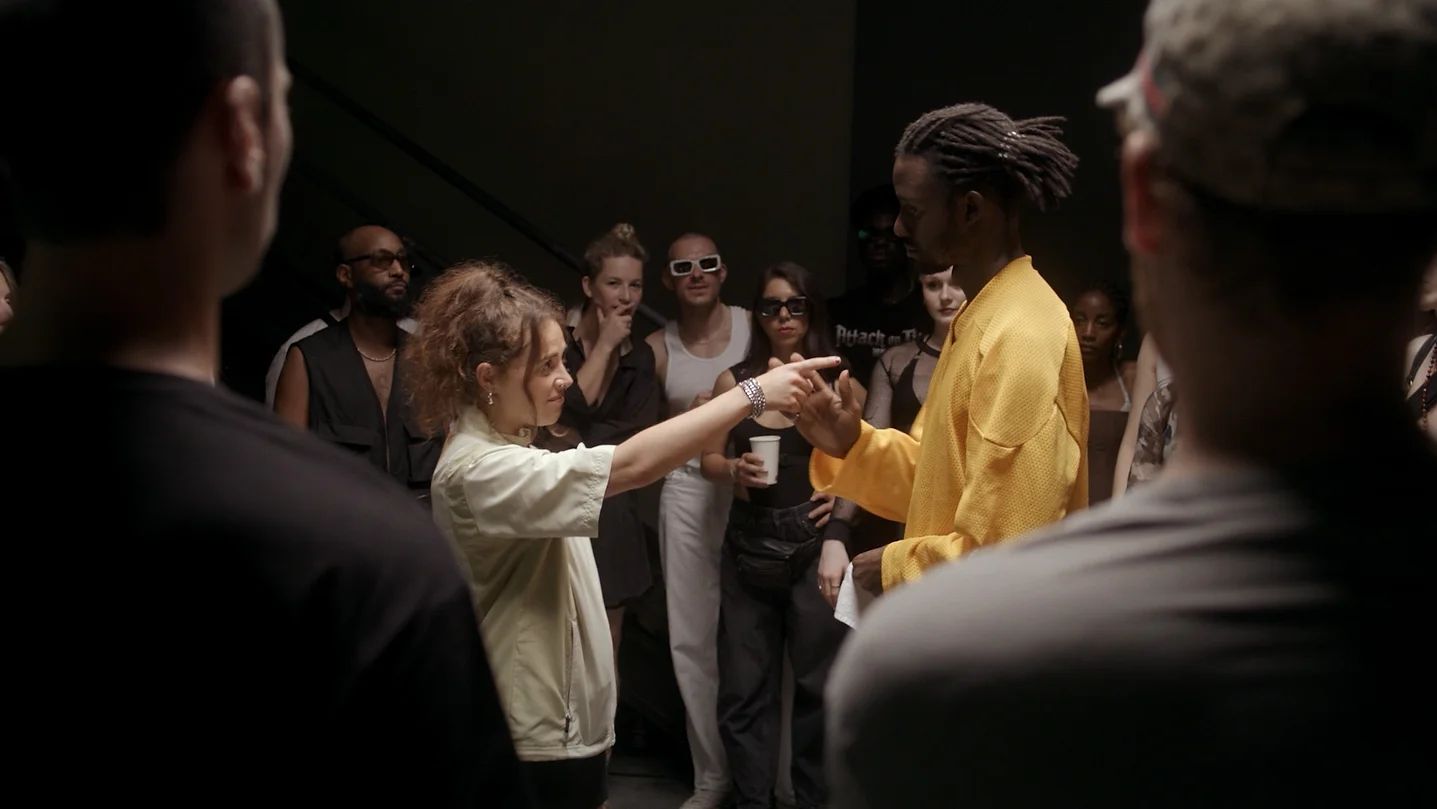
The success of any imperial project depends on the effective integration of the colonised entities: individuals and entire nations. The legitimacy of the rule is ensured through the projection of the image of perpetuity: the presence of the empire for ages. The imperial regime cannot be perceived as an occupier and, therefore, temporary. It looks for allies from among the enslaved, builds rituals of loyalty and punishes defectors. It is important for the regime that those who volunteer to cooperate are not perceived as collaborators by their own people. A sufficient number of those willing to collaborate can even guarantee a certain nationality privileged place in the ethnic taxonomy of the empire. Therefore, a decolonial interpretation of the history of Russia would be inconsistent without recognising the active participation of Ukrainians in the formation of its imperial project. From Kyiv-born archbishop of Novgorod Theophan Prokopovych to the red bourgeoisie of the USSR, the Ukrainian elite was part of this history, often providing a reformist and progressive impulse. Likewise, this decolonial reading is impossible without addressing the figure of Ivan Mazepa as a key part of modern Ukrainian identity. Proclaiming Mazepa’s name outside the official canons of remembrance, keeping his image in the spotlight – in all its complexity – may prove to be an important decolonial exercise.
As an adviser and close ally of the tsar, Mazepa was at the origins of the Russian Empire. The Ukrainian elites in general were the driving force behind the pro-Western reforms of Peter the Great and for a certain time they were enthusiastic about such reforms. Mazepa had his own vision of enlightened Orthodoxy and tried to make it a model for the reformed kingdom [1]. The impetus for renewal was transmitted through church institutions as they played a key role in administrative, judicial and educational activities. This trend was not new: even the Patriarch Nikon of Moscow called Petro Mohyla [2] his role model and borrowed rules from the Metropolis of Kyiv [3]. During the reign of Peter I, these processes only intensified. By the will of the emperor, ordinary priests began to study in Kyiv, while Ukrainians occupied the highest echelons of the clergy. Under Ukrainian influence, Western baroque elements began to appear in the church architecture of Muscovy. Mazepa wasted no time promoting his protégés to the most influential positions. Already in a few years, the Holy Synod was ‘occupied’ by reformist churchmen, brought up within the walls of the Kyiv-Mohyla Collegium [4].
This Ukrainian-born elite were the bearers of a special political culture. The upper echelons of the Cossack state were highly educated and influenced by the West [5]. They believed in the ideals of enlightenment, mediated through church printing and the spread of literacy. At the same time, there was also a cult of an authoritative leader which spread this enlightenment. The well-known proverb, ‘from Bohdan to Ivan, we didn’t have a hetman…’ [6] reflects the longing for the stability of the military-political regime, which contrasted with prolonged periods of ‘ruin.’ At the centre of this worldview is the collective image of a wise hetman, an educated patron whose diplomatic skills allow him to hold power among boisterous groups of Cossacks. The period of relative stability during Mazepa’s rule enabled investment in education and science, competitive patronage of tycoons and military officers, and phenomena such as the Mazepa Baroque [7]. Such development was compatible with the priorities of the Russian Empire in times of Peter the Great, its leaders, and was being actively appropriated by them. Another example is the figure of Theophan Prokopovych: the head of the Kyiv-Mohyla collegium, and at the same time the author of the imperial brand name. He emerged from the circle of Mazepa’s protégés and turned out to be the most successful of the Kyivan hierarchs integrated into the Russian clergy. In the end, he became an adviser to the tsar and insisted on the modernisation of Muscovy in the spirit of enlightened absolutism. It was he who advised Peter to change the name of the Grand Duchy of Moscow, or Moscow Tsardom, to the ‘All-Russian Empire’, corresponding to the spirit of the times.
To legitimise their rule, empires often allow colonised subjects to play leading roles in its structures. According to this logic, Ukrainians were given key positions in the new state that emerged at the beginning of the 18th century. The emigration of a whole pleiad of Ukrainian cultural figures to Moscow and Saint Petersburg also had a symbolic effect: it served as a confirmation of the indivisibility of the Little Russian and Great Russian identities [8]. Such people were not recruited from the masses – policies of cultural assimilation were directed primarily at the intelligentsia. As part of the ongoing ‘brain-drain’, many ‘inconvenient’ and free-thinking individuals came to the metropolis. Some, like Yevhen Hrebinka, the translator of Pushkin’s Poltava, managed to integrate successfully. The majority, like Panteleimon Kulish and Taras Shevchenko, had to go through the imperial Bildungsroman: after receiving initial success in a new environment and probing the limits of free-thinking, they faced exile and re-education. This inevitably culminated in a ritualised act of repentance, often by addressing the highest name. The satisfaction of this request by the autocrat and the return of the rebellious hero to a normal life symbolised the humanistic nature of the regime.
Taras Koznarskyi notes the duality of the Ukrainian subject in Russia’s imperial discourse. He relies on Gomi K. Bhabga’s research on postcolonialism and identity construction of the colonised through performative acts. The coloniser and the colonised participate in an imperial diagnostic ritual whose purpose is to test loyalty. However, the manifestations of Ukrainianness in the Russian Empire differed from the racial mimicry of most colonies. Its carriers were educated and socially mobile groups, and differentiating details such as accents or clothing could be barely noticeable [9]. Therefore, the imperial audience demanded more expressive and purposeful gestures from the Little Russians. Ukrainians were constantly checked for ideological aberrations, ‘artefacts of identity’, such as admiration for the free spirit of the Cossacks. However, this also prompted mimicry, attempts to blend in with the environment and performative confirmation of one’s own conformity [10]. The figure of Mazepa was a key component of this ritual. Public renunciation of Mazepa the traitor [11], often rhetorically complex, produced specific poetics of shame and nostalgia. Often ‘anathemas’ were pronounced metaphorically, in Aesopian language, to hide sympathy for the hetman.
Instead, literature and art, starting from the 18th century, took a course towards comic domestication, trivialisation of the differences between the two peoples [12]. Thanks to the works of Pushkin and Mykola Hohol [13], the ‘Little Russia’ theme became fashionable in the metropolis, and real ethnographic details were combined with caricatured clichés. The image of Ukraine, previously associated with the formidable Cossacks, was reduced to that of a pastoral periphery hospitable to urbanite Russians. This image was from then on inhabited by simple-minded people capable only of clumsy mischief: ‘…the curse of Mazepa comes full circle: the name Mazepa as directly applied to Ukrainians evokes the stigma of imputed treachery and villainy, while representations of stereotypical Ukrainian cunning and duplicity (khokhol) evoke his name indirectly, and in both cases these qualities are implied as essential elements of the Ukrainian national character.’ Little Russia had to provide a sense of security in contrast to the chaos of the previous era. ‘Friends of bloody antiquity’, as seen in Pushkin’s Poltava, had no place in this inclusive vision of the new empire.
Alexander Pushkin applies a similar technique to the figure of Mazepa himself: comedic neutralisation through the reduction of character depth. From the publication of Poltava onwards, Mazepa was not even a treacherous genius, but an old and arrogant wretch. His betrayal was not the product of a Machiavellian mindset or a desire to follow his people’s liberation imperative, but of revenge for Peter’s prank: anecdotally,Mazepa was dragged by the moustache and shamed by the emperor in public. Unable to control personal impulses, he lost control over the fate of his own people. One of the rounds of Battle for Mazepa by Mykola Rydnyi is dedicated to this very moment. Following Pushkin, the rapper from Romania mocks the senile wretchedness of Mazepa’s body, the clumsy aspirations of romantic love. He sympathises with the Russian poet calling him an honest, simple guy who had traditional ideas about life, unlike Byron. It is significant that a young poet responds to his reproaches defending the honour of the hetman.
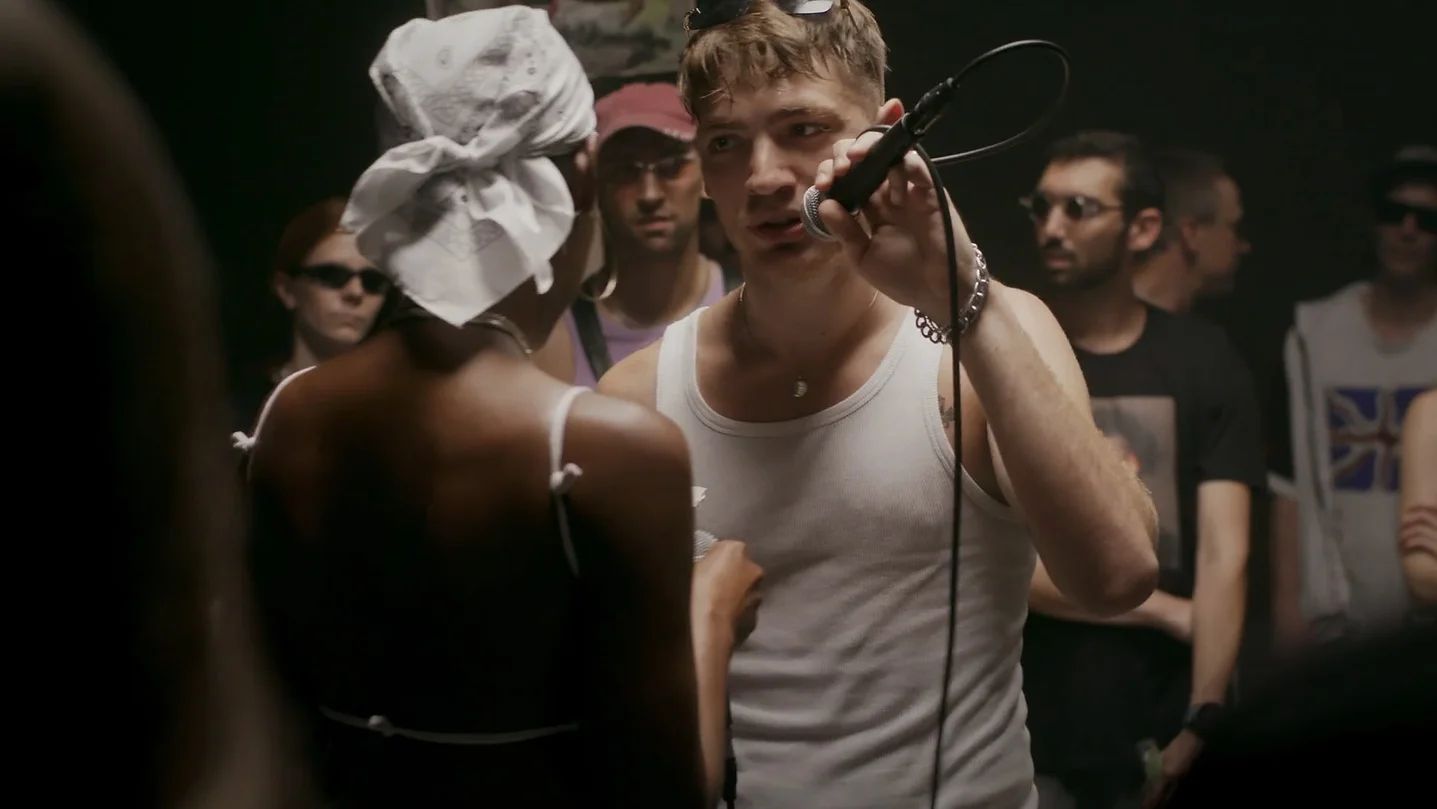
Poltava itself is easy to ignore as a tendentious work and a backdrop for the grand narrative of Russian history. Pushkin was obviously aware of his affirmative role in the formation of this narrative, as well as the prospect of becoming the main poet of the new empire. He lived through his own period of persecution, exile and pacification of the rebellious spirit, now being an ideal candidate for the role. However, literary critics of his time received the work coldly, especially after Southern Poems, and criticised it for historical fallacies.
Byron, with whom Pushkin polemicized, crafted an idea of Mazepa which was no less distant from reality. Western European ‘Mazepiana’ – the tradition of using the Ukrainian hetman as a character in literature, theatre and visual arts – was started by Voltaire. In The History of Charles XII, King of Sweden, he presented for the first time an iconic plot that would be reproduced by hundreds of other authors: the forbidden love of Mazepa as a young man punished by a Polish nobleman, his journey tied to a horse and a rescue in the steppes of his native Ukraine. Picked up by Delacroix and Hugo, his image was absorbed by early romanticism. Mazepa became the personification of a poetic genius, a passionate lover, and most importantly, a fighter against tyranny. His exploits were often depicted in mythical, oriental settings: on engravings of the time, you can see characters in turbans next to Mazepa. French romantics projected the environments of colonised Algeria onto the distant and unexplored steppes of Ukraine. Orientalised Mazepa became part of the cultural repertoire described by Edward Said as a ‘fabulously rich world’ of sultans and sphinxes [14]. Despite the distance from the historical prototype, Mazepa’s popularity played an important role. For the first time, Europeans learned the word ‘Ukraine’, notably so, in a context of ‘love of freedom’. The romantics sympathised with the people’s liberation movements in Europe, admired their unequal struggle against various tyrannies. Shortly before his tragic death, Byron personally led a squad of Greek rebels in an attack on an Ottoman fortress.
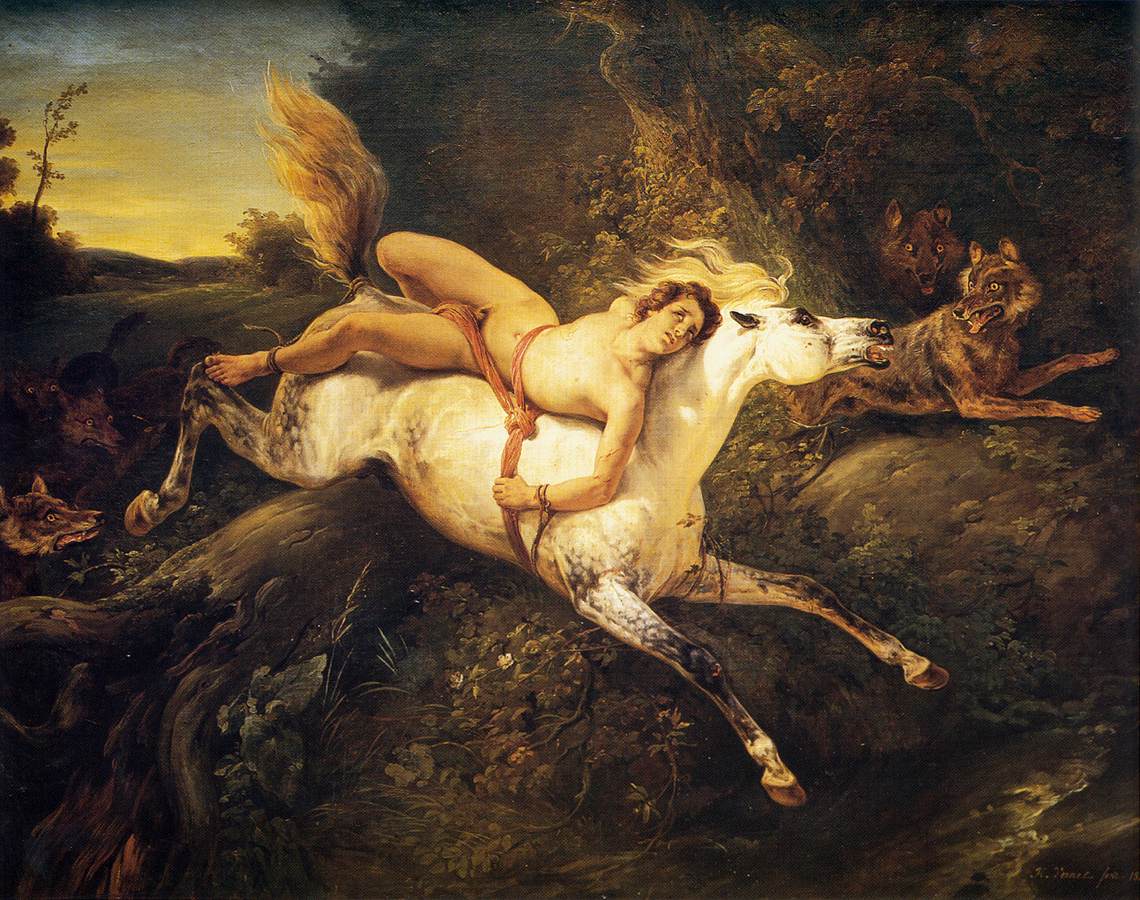
Byron’s myth of Mazepa was consistent with emerging narratives of nation-building. Their key component was a romanticised image of the landscape that was supposed to nourish the hero and give him strength to avenge the tyrant. At the call of instinct, a wild horse brought Mazepa to his native land, where he found salvation – a female steppe-dweller brought him water. In romantic stories, the earth itself seems to take revenge on the oppressors, helping the hero. At the same time, the virgin space, which is encroached upon by foreign forces, is endowed with feminine features and requires protection. In Battle for Mazepa a fierce rap round is dedicated to this topic. Here, the Ukrainian landscape turns out to be a ‘projection screen for (male) desire’, and the fertility of the land makes it worth fighting for. Hyper-masculine, sexualised vocabulary, typical of the language of hip-hop, emphasises the motivations of Peter, who pursues Ukraine as a naive lover. The performers offer their own poetic interpretations of the events, thanks to which elements of contemporary ecological thinking seep into the Byronic narrative. One of the poets suggests that the best state for the earth is when there are neither those who encroach on it nor those who intercede. That is to say, when there is an absence of humanity.
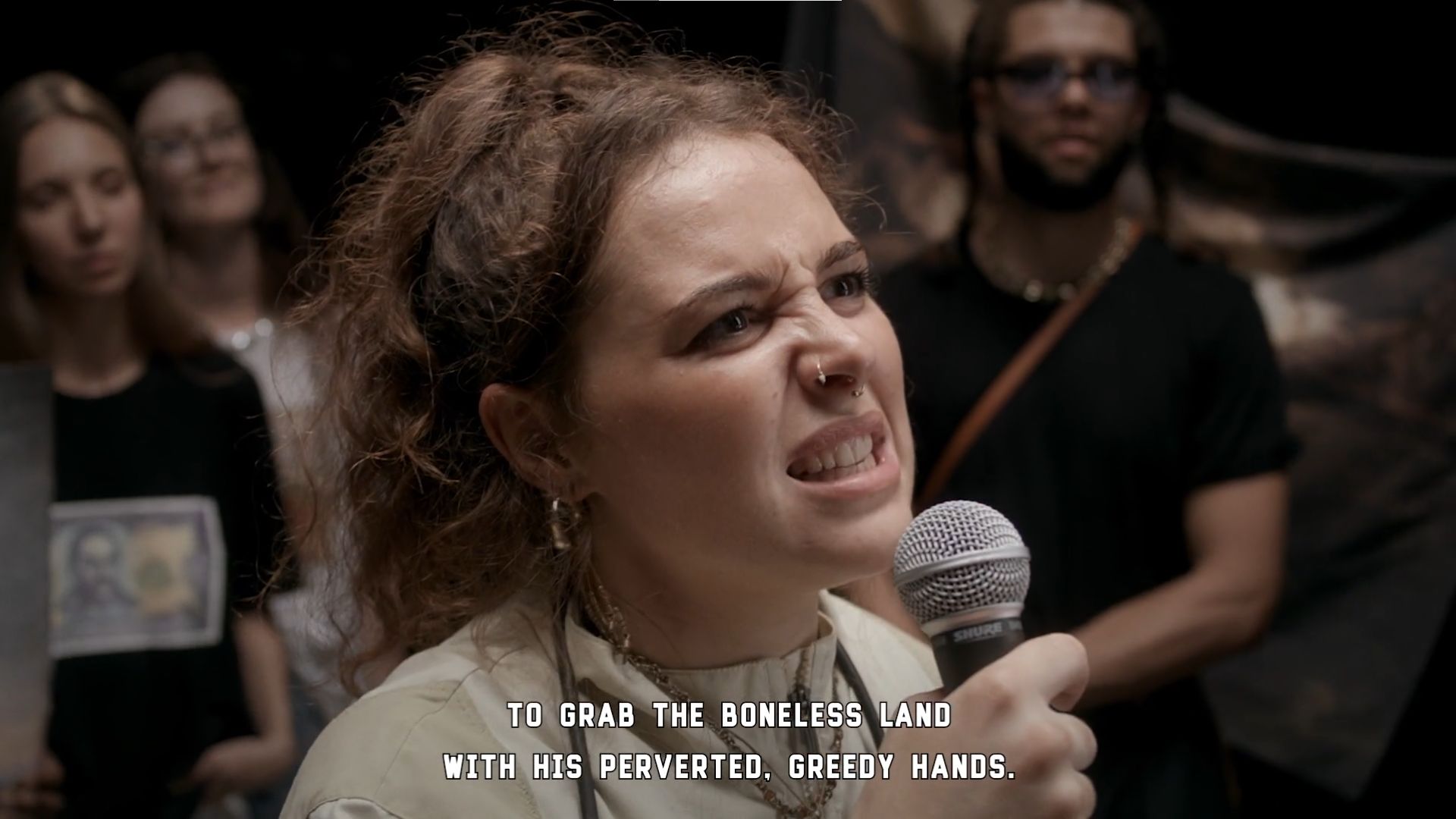
The campaign to ‘anathemise’ Mazepa [15], launched by Peter’s government, made him the most hated figure in the Russian political imagination for several centuries – until this role was transferred to Stepan Bandera. At the same time, the elevation of the historical role of Bohdan Khmelnytskyi was supposed to be the antidote to the Mazepa’s curse [16]. This counter-cult worked together with the ideologeme of ancient Rus’ as the common root of fraternal nations [17]. Notably, the monument to Khmelnytskyi on Sofia Square was unveiled for the 900th anniversary of the baptism of Rus in 1888 [18]. The ideology is borrowed by the Soviet regime, which would also celebrate the ancient traditions of coexistence of the heirs of Rus’. The Brezhnev regime was particularly notable for its symbolic manifestations in public space. State commemorations of tentatively established date of the foundation of Kyiv included the opening of the monumental complex of Peoples’ Friendship Arch [19] and the monument to the Pereiaslav Rada [20].
In parallel with the formation of the imperial myth, Ukraine’s own legend about Mazepa as a defender of the oppressed and a patron of culture was maturing. After Ukraine gained independence in 1991, this became part of the official memory canon, with Mazepa being viewed as a hero, the author of the idea of a nation state independent from imperial forces. The old alliance with the King of Sweden was used to symbolically bolster the young country’s Euro-Atlantic aspirations and gain distance from the increasingly authoritarian Russian Federation. The reconciliatory politics of memory, typical of Ukraine in the 2000s, gave rise to such monuments as the Monument to Lviv Eagles [21] and the Rotunda of Reconciliation in Poltava [22]. This reconciliation would not, of course, be able to stand the test of time. The full-scale invasion of the Russian Federation became the catalyst for the renunciation of historical signifiers associated with the Russian Empire and the beginning of the widespread use of the term ‘decolonisation’ in public discourse. Prior to this, the policy of decommunisation concerned exclusively the figures of the Soviet government and bypassed military monuments. The implementation of the law ‘On the Decolonisation of Toponymy’ [23] officially legalised ‘Pushkinopad’ [24] – the process of demolishing monuments to the Russian poet Pushkin [25], which de facto continued from the spring of 2022.
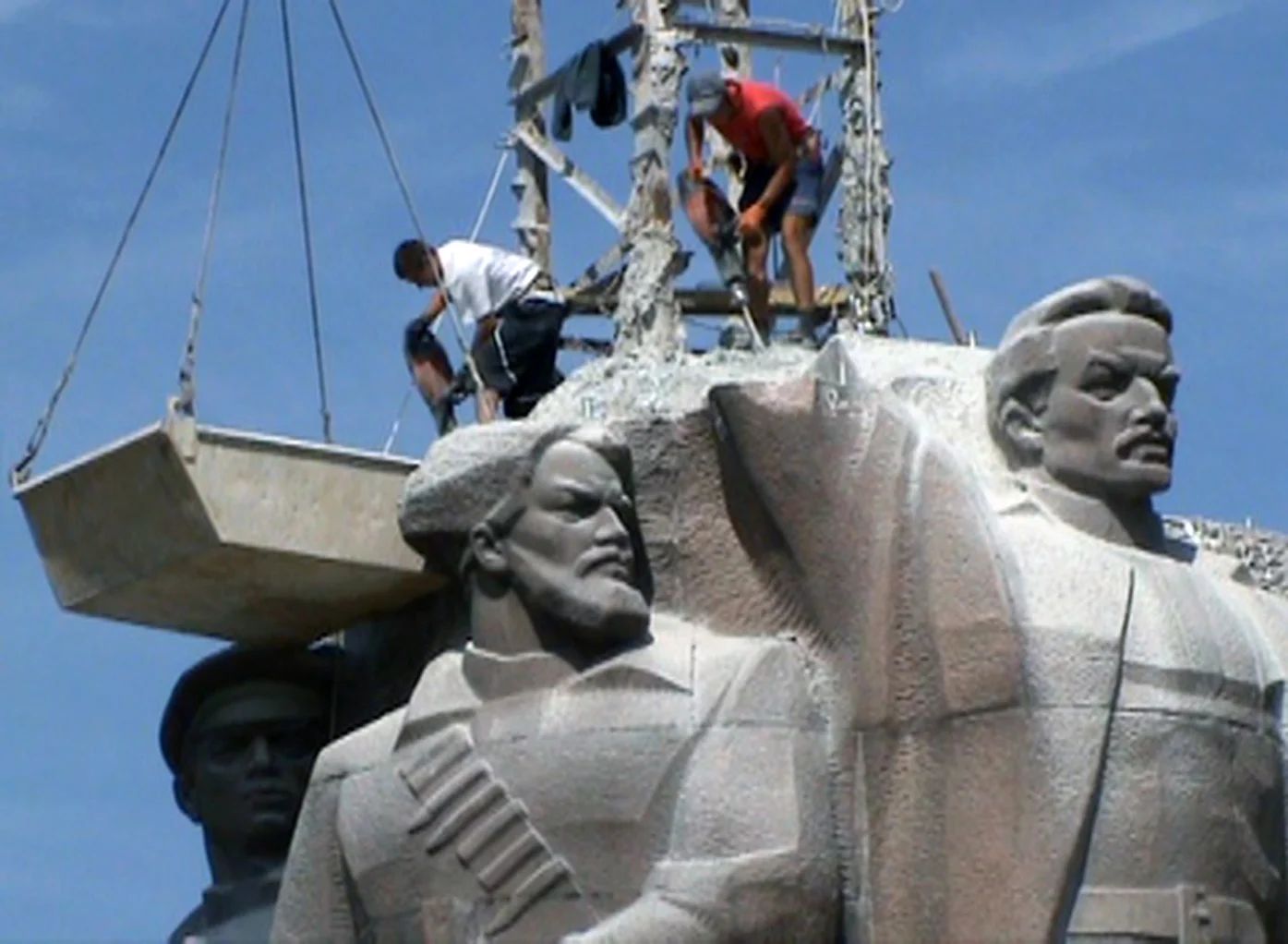
The smear campaign against Mazepa has also spread abroad through high-level cultural and diplomatic events sponsored by the Russian imperial and Soviet governments. For example, an eponymous opera, staged in Paris in 1893 on the most prestigious stage of the Palais Garnier, reproduced Pushkin’s antipathetic image as a selfish traitor. The play aimed to influence the mood of the public before the conclusion of the anti-German military pact between Russia and France [26]. The battle for Mazepa continued on various theatres’ stages, which reproduced diametrically opposite versions of the historical prototype. After the end of the Second World War, the Ukrainian diaspora joined the fight: in Carnegie Hall in the USA, several performances about Mazepa were organised by the Ukrainian Youth League of North America, whilst Ivan Ohienko wrote the play Crucified Mazepa in exile in Canada.
However, in the second half of the 20th century, the craze for Mazepa faded away, and the image of the hetman practically ceased to be reproduced in either vernacular or high culture. Rydnyi’s Battle for Mazepa is an attempt to contest this image once again and to examine it outside the usual condemnation or glorification. Ridnyi describes his goal as being to reveal the figure of Mazepa in his socio-political complexity and does so from an anti-imperialist position. However, the history of the creation and presentation of Battle for Mazepa does not allow us to consider it separately from the dynamics of cultural diplomacy in the conditions of the New Cold War. Namely, the fact that its creation was supported by two institutions: the John Hansard Gallery at the University of Southampton, and Pushkin House. The latter was founded by the Russian émigré elite in London as a politically neutral organisation in 1954 [27]. Despite its current pro-Ukrainian position, Pushkin House has been engaged in normatively representing the ‘great’ Russian culture for a long time. Its support of a statement revealing Pushkin’s role in the formation of the imperial narrative can be either considered a critical gesture or the fatal flaw of the resulting artwork. Modern cultural institutions resort to ‘outsourcing’ the analysis of complex aspects of their own functioning, for example, their colonial history, to the artists. Artists enter into a specific relationship of interdependence with the criticised object – as is commonplace in the genre of ‘institutional critique’. Institutions thus project a self-critical image, as required by the current political agenda. Interestingly, the artworks which result from such interactions, employ a certain immunity and ‘transcend’ the context of their creation. However, in the tense intellectual climate, it is becoming difficult to judge works solely by their content.
Overall, it is difficult not to note the significance of Battle for Mazepa for all its audiences. For the Western viewer, it can ignite romanticised solidarity, providing an opportunity to relive Byron’s fascination with the mythical, passionate, orientalist Mazepa, the hero with a thousand faces. The interpretation of Vira Aheieva, who finds in Byron’s poem a metaphor for the indifference of the West, seems appropriate here. The exhausted Swedish king falls asleep without listening to the old hetman’s story, a fable of evil fate and the need to resist it against all odds [28]. Old Europe, despite understanding the role of Ukraine as a frontier in the fight against tyranny, lacks the impetus for truly decisive actions. In the current conditions of ‘compassion fatigue’, the new Mazepiana may yet prove to be the source of affective mobilisation.
The Ukrainian viewer is offered an experience of introspection, and an opportunity to better understand the colonial elements that determined the early modern Ukrainian identity. The ‘artefacts’ of the Little Russian worldview are extremely durable, influencing political culture for centuries. Putin’s chauvinistic manifesto On the Historical Unity of Russians and Ukrainians, written in 2021, emphasises in every way the collaborative role of ‘Little Russians’ in creating a ‘great common country’. This believable, subtle manipulation aims to create shame and doubt in the Ukrainian subject and to lay the groundwork for its aggressive recolonisation. However, this legacy should concern the Russian regime itself, and may even be the cause of its downfall [29]. Mimicry is a mutual process: in trying to fully assimilate new people, the empire risks absorbing a number of potentially destructive traits. Evidently, the most terrifying traits for today’s Russia are those inherent in the spirit of the old Cossacks: the immediacy of popular anger and the readiness to betray the hated feudal lord without any hesitation.
Translation from Ukrainian by Milena Khomchenko. Editing by Ada Wordsworth.
Larion Lozovyi is an artist and researcher from Kyiv, Ukraine. He graduated from the National University of ‘Kyiv-Mohyla Academy’, receiving degrees in Philosophy and Political Science. His research interest is focused on the processes of economic and cultural modernisation, and their subsequent reversal in post-Socialist states. Through his artworks and texts, he explores how these changes are reflected in art histories of his home region.
Published 29 September 2024
This text is prepared within the Erasing and Recalling project supported as part of the (re)connection UA 2023/24 programme, which is implemented by the Museum of Contemporary Art (MOCA) NGO and the Ukrainian Emergency Art Fund (UEAF) in partnership with UNESCO and funded through the UNESCO Heritage Emergency Fund.
- Tatiana Tairova-Yakovleva, Ivan Mazepa and the Russian Empire, trans. Jan Surer, (Montreal: McGill-Queen’s University Press, 2020).
2. Petro Mohyla was a Ukrainian political, church and educational figure. He was the Metropolitan of Kyiv, Galicia and all Rus’, an exarch of the Ecumenical Patriarchate of Constantinople during 1633-1646.
3. The autonomous metropolis of the Ecumenical Patriarchate of Constantinople after Volodymyr the Great, Grand Prince of Kyiv, baptised Kyiv Rus’ in 988.
4. The Kyiv-Mohyla Collegium was an educational college founded in 1632 on the basis of Kyiv Brotherhood School (est. 1615) that was joined with Kyiv Pechersk Lavra School. The schools were the predecessors of the contemporary Ukrainian higher education institution entitled The National University of ‘Kyiv-Mohyla Academy’. Here you can find the more detailed history of the place: https://vm.ukma.edu.ua/en/history/kyiv-mohyla-college/.
5. See 1.
6. The Ukrainian proverb refers to two Ukrainian hetmans Bohdan Khmelnytskyi and Ivan Mazepa.
7. Also known as Cossack Baroque or Ukrainian Baroque. An architectural style combining the local architectural features with the Baroque in Europe. It was developed during the activity of Petro Mohyla and got its biggest flourishment under Mazepa.
8. Little Russian identity is a designation for Ukrainians within a Russian imperial ideology of a triune Russian nation, which consisted of Great Russia (stands for Russia), Little Russia and White Russia (stands for Belarus). Even today, Russian historians and military ideologues use this idea to discredit Ukraine as a separate nation and justify Russia’s military invasion.
9. Taras Koznarsky, “Obsessions with Mazepa”, Harvard Ukrainian Studies, vol. 31, no. ¼ (2009): 569–615.
10. ‘Mimicry,’ Valeriia Buradzhyieva, Ukrainian Decolonial Glossary, https://decolonialglossary.com.ua/mimicry-en.
11. At one point of the course of the Great Northern War, Mazepa decided to abandon his allegiance to the Russian Empire and sided with the Swedes, which was considered treason at the time. Amongst a multitude of other reasons, Mazepa was dissatisfied with the erosion of Ukrainian Hetmanate’s autonomy within the Empire, and Peter’s refusal to commit forces for the defence of Ukraine against Polish incursion.
12. See 8.
13. Mykola Hohol is the Ukrainian transliteration of the name of the author often referred to in English following the Russian rules of transliteration as Nikolai Gogol.
14. Ksenya Kiebuzinski, “The (Re)Fashioning of an Archetype of Genius: Ivan Mazepa in Nineteenth-Century French Literature and Art”, Harvard Ukrainian Studies, vol. 31, no. ¼ (2009): 633–53.
15. On November 12th, 1708, Peter the Great ordered to deprive Mazepa from the Russian Orthodox Church after he joined the side of Charles XII of Sweden during the Great Northern War.
16. Serhii Plokhy, “Poltava: The Battle That Never Ends”, Harvard Ukrainian Studies, vol. 31, no. ¼ (2009): xiii–xxv.
17. By concluding the Treaty of Pereiaslav, Khmelnytskyi allied the Cossack Hetmanate with the Tsardom of Russia, thus placing central Ukraine under Russian protection. This resulted in three centuries of uninterrupted rule by the Tsardom, the Russian Empire and Soviet Union. You can read more on this topic in the Internet Encyclopedia of Ukraine: https://www.encyclopediaofukraine.com/display.asp?linkpath=pages%5CP%5CE%5CPereiaslavTreatyof1654.htm.
18. The monument was opened during the times of the Russian Empire in 1888. The idea to create a monument was initiated by a Ukrainian historian Mykola Kostomarov, but the project and its execution was controlled and co-funded by the tsarist government.
19. The Peoples’ Friendship Arch was opened on November 7, 1982, to commemorate the unity of Ukraine and Russia following the Treaty of Pereiaslav from 1654. It was renamed to the Arch of Freedom of the Ukrainian People following the decision of the Kyiv City Council on May 14, 2022.
20. The latter was lucky enough to resist the decommunisation of public space that was ongoing in Ukraine for a longer time: it was demolished only on April 30, 2024.
21. The Lviv Eagles are the Polish volunteer formations who fought against The West Ukrainian People’s Republic in 1918-1919 for the control of the city of Lviv. The monument was destroyed by Soviet authorities in the 1950s. More on the monument here: https://lia.lvivcenter.org/en/objects/monument-f-orlat/.
22. It was opened on June 27, 2009, to commemorate the 300th anniversary of The Battle of Poltava, a decisive battle of the Great Northern War.
23. The Law of Ukraine ‘On the Condemnation and Prohibition of Propaganda of Russian Imperial Policy in Ukraine and the Decolonization of Toponymy’ since March 21, 2023.
24. In Ukrainian, the root ‘pad’ refers to ‘falling’.
25. These monuments were a canonical part of the public space in the USSR and were part of urban planning standards.
26. See 12.
27. From the history of Pushkin House on its official website: https://www.pushkinhouse.org/about/history.
28. “Мазепа – герой чи зрадник: образ гетьмана у Байрона і Пушкіна”, Віра Агеєва, березень 2019: https://www.bbc.com/ukrainian/blogs-47636816.
29. ‘The Case Against the Russian Federation’, Oleksiy Radynski, accessed March 2022: https://www.e-flux.com/journal/125/453868/the-case-against-the-russian-federation/.
